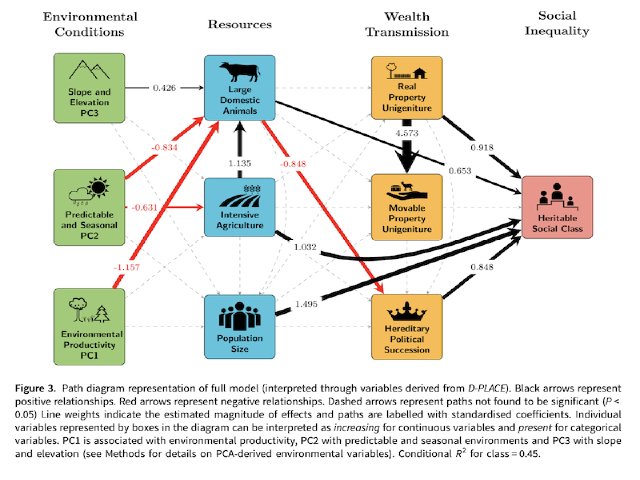Pathways to social inequality.

Authors:
Citation:
Details:
Published: 7 July, 2021.
Download:
Abstract:
Social inequality is ubiquitous in contemporary human societies, and has deleterious social and ecological impacts. However, the factors that shape the emergence and maintenance of inequality remain widely debated. Here we conduct a global analysis of pathways to inequality by comparing 408 non-industrial societies in the anthropological record (described largely between 1860 and 1960) that vary in degree of inequality. We apply structural equation modelling to open-access environmental and ethnographic data and explore two alternative models varying in the links among factors proposed by prior literature, including environmental conditions, resource intensification, wealth transmission, population size and a well-documented form of inequality: social class hierarchies. We found support for a model in which the probability of social class hierarchies is associated directly with increases in population size, the propensity to use intensive agriculture and domesticated large mammals, unigeniture inheritance of real property and hereditary political succession. We suggest that influence of environmental variables on inequality is mediated by measures of resource intensification, which, in turn, may influence inequality directly or indirectly via effects on wealth transmission variables. Overall, we conclude that in our analysis a complexnetwork of effects are associated with social class hierarchies.